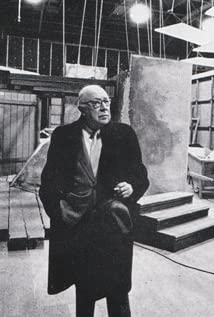As per our current Database, William K. Howard has been died on 21 February, 1954 at Los Angeles, California, USA.
When William K. Howard die, William K. Howard was 61 years old.
| Popular As | William K. Howard |
| Occupation | Director |
| Age | 61 years old |
| Zodiac Sign | Gemini |
| Born | June 16, 1893 (St. Marys, Ohio, USA) |
| Birthday | June 16 |
| Town/City | St. Marys, Ohio, USA |
| Nationality | USA |
William K. Howard’s zodiac sign is Gemini. According to astrologers, Gemini is expressive and quick-witted, it represents two different personalities in one and you will never be sure which one you will face. They are sociable, communicative and ready for fun, with a tendency to suddenly get serious, thoughtful and restless. They are fascinated with the world itself, extremely curious, with a constant feeling that there is not enough time to experience everything they want to see.
William K. Howard was born in the Year of the Snake. Those born under the Chinese Zodiac sign of the Snake are seductive, gregarious, introverted, generous, charming, good with money, analytical, insecure, jealous, slightly dangerous, smart, they rely on gut feelings, are hard-working and intelligent. Compatible with Rooster or Ox.


Director William K. Howard was born in St. Marys, OH, in 1893. He studied engineering and law at Ohio State University but gravitated towards film distribution when he took a job as sales manager for Vitagraph.
After serving in an artillery unit with the American Expeditionary Forces in World War I, he relocated to Hollywood and trained as an assistant director at Universal. Howard began directing films in 1921, first for Fox, then at Famous Players-Lasky (1924).
Many of his early silents were commercially popular westerns, characterized by powerful images of rugged landscapes, often featuring sweeping plains and imposing monoliths. He excelled equally at spectacular action sequences, such as the one at the climax of Volcano (1926), set on the island of Martinique on the eve of the eruption of Mt.
Pelee. Howard was also influenced by German expressionism--notably by the films of F.W. Murnau--as reflected, for example, in the stylized, somber look of White Gold (1927). This was the first of his films to attract critical notice, but, ironically, did less well at the box office than his others.
With the onset of talking pictures, Howard made the rounds of the major studios, acquiring a reputation for turning out superior melodramas. He became increasingly prodigious, turning out two or three pictures per year.
He did some of his best work at Fox between 1928-33. This included one of the first multiple-story films made up to that point, the shipboard mystery Transatlantic (1931). A formula that would become commonplace during the 1970s, it was aptly described by "Variety" as "an aquatic Grand Hotel (1932)".
However, unlike "Grand Hotel", "Transatlantic" was less about performance and dialogue than it was about mobile camera movement, tracking shots, clever angles and neat visual touches, such as a climactic chase through the stylized interior of the ship, where steam and inventive expressionist lighting devices helped to convey a threatening and claustrophobic atmosphere.
Howard reached his peak with the compact courtroom drama The Trial of Vivienne Ware (1932), characterized again by fluid camera work and prodigious use of flashbacks. Even more innovative was The Power and the Glory (1933).
This seedy tale of a railway tycoon's rise to the top and his inevitable corruption by power is often referred to as a precursor to Citizen Kane (1941). It employs the same technique of narrative flashback and has as misanthropic a view of human nature.
In the opinion of Mordaunt Hall, commenting for "The New York Times": "no little praise for the excellence of this film is due to William K. Howard for the direction and to Preston Sturges, who is responsible for the story and its development" (August 17, 1933).
After brief spells at MGM (1934-35) and Paramount (1935-36), Howard crossed the Atlantic to work on three films for Alexander Korda. Best of these was the excellent Fire Over England (1937), a lavish costume epic about the defeat of the Spanish armada in the 16th century.
Visually and dramatically one of his best films, its success was due in no small measure to the fact that Howard had been able to hire his favorite cinematographer, fellow American James Wong Howe, as well as having on board the excellent Russian-born art director Lazare Meerson.
After Howard returned home, he found worthwhile assignments difficult to come by and his career went into sudden free fall. It is unclear whether this was due to his increasing struggle with alcoholism or to a notorious incident in 1936, in which he ordered his production supervisor off the set (of The Princess Comes Across (1936)) for "too much interference", in keeping with new guidelines set by the Screen Directors Guild.
Whatever the true reasons for his decline, Howard finished his career directing routine second features. After being replaced by Lloyd Bacon as director of Knute Rockne All American (1940) for being "excessively slow", he had his last unsuccessful comeback attempt with the James Cagney vehicle Johnny Come Lately (1943).
Howard made two more films--one for "B" studio Republic Pictures and the other for bottom-of-the-barrel Producers Releasing Corporation (PRC)--before calling it quits in 1946. He died in February 1954 at the age of 60.
There is a star on the Hollywood Walk of Fame on Vine Street that bears his name.










